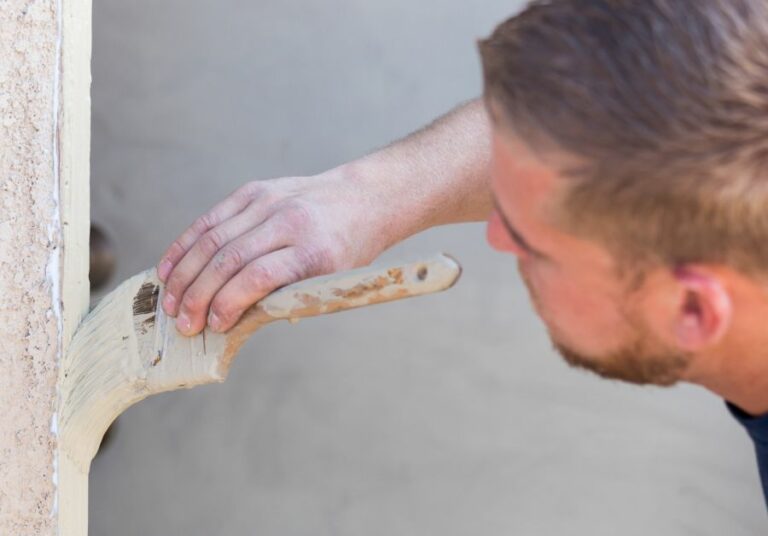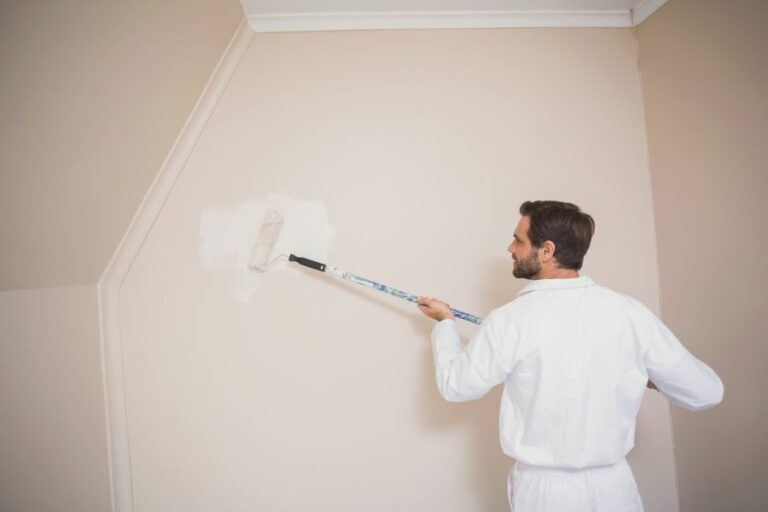Best Indoor Paint Options With Oil Base. What Pros Say
When choosing the best indoor paint options, it’s essential to consider the type of base that will work best for your specific needs. Oil-based paints have been a popular choice for many homeowners due to their durability, smooth finish, and ease of application. Let’s discuss the top oil-based paint options available in the market, so you can confidently select the best one that suits your requirements.
Best indoor paint options with oil base:
The best oil-based indoor paint options include high-gloss, semi-gloss, and satin finishes. Top choices are Benjamin Moore Impervex Latex High-Gloss for durability and sheen, Sherwin-Williams ProClassic Interior Oil-Based Semi-Gloss for a balance between aesthetics and durability, and Pratt & Lambert Accolade Satin Paint for a subtle, elegant finish.

Discover the top oil-based indoor paint options that promise durability, easy application, and stunning finishes. We’ve handpicked the best brands to transform the interior of your home effortlessly. Read on to unveil which ones made the cut and why they’re worth your consideration.
Contents
- 1 Oil-Based Interior Paint Choices
- 2 Oil-Based Indoor Paints
- 3 Surfaces for Oil-Based Paint Application
- 4 Comparing Oil-Based and Water-Based Interior Paints
- 5 Oil-Based Residential Paint
Oil-Based Interior Paint Choices
When it comes to picking the best indoor paint options with an oil base, it’s important to consider factors such as durability, finish, and the type of environment or space the paint will be applied in.
• High-Gloss Oil-Based Indoor Paints
– Advantages of High-Gloss Paint
High-gloss oil-based paints are known for their exceptional durability, making them perfect for surfaces that require constant cleaning or are prone to dirt retention.
The glossy finish of this paint type is resistant to scratches and stains, ensuring that your walls and surfaces maintain their sheen for longer periods of time.
The reflective quality of high-gloss paints also increases the brightness of a room, giving it a vibrant and fresh appearance. It is ideal for spaces that need an extra touch of elegance or sophistication, such as dining rooms, living rooms, or bedrooms.
Benjamin Moore Impervex Latex High-Gloss
One of the top high-gloss oil-based indoor paint options in the market is Benjamin Moore’s Impervex Latex High-Gloss. This paint is known for its outstanding adhesion properties and superior color retention, resulting in an aesthetically pleasing finish that lasts for extended periods.
– Recommended Use
I recommend using high-gloss oil-based indoor paint options for areas with high humidity, frequent exposure to water, and where durability is essential. These areas may include bathrooms, kitchens, entryways, and laundry rooms.
• Semi-Gloss Oil-Based Indoor Paints
– Advantages of Semi-Gloss Paint
Semi-gloss oil-based indoor paints offer a balance between a matte finish and a glossy sheen, providing a subtle shine without the high reflectivity of high-gloss paints. This paint type is resistant to moisture, making it suitable for areas prone to dampness, such as bathrooms and kitchens.
In addition to its moisture resistance, semi-gloss indoor paint is also easy to clean and provides good durability. It’s an excellent choice for high-traffic areas where frequent touch-ups may be needed due to wear and tear.
Sherwin-Williams ProClassic Interior Oil-Based Semi-Gloss
One of the best semi-gloss oil-based indoor paint options is Sherwin-Williams ProClassic Interior Oil-Based Semi-Gloss. This paint boasts excellent flow and leveling, providing a smooth and uniform appearance without visible brush strokes.
Its superior adhesion properties ensure that the paint stays put for more extended periods, reducing the need for frequent touch-ups.
– Recommended Use
I recommend using semi-gloss oil-based indoor paint options in areas where a balance between durability and aesthetics is crucial. Examples of such places include bedrooms, living rooms, hallways, and stairwells.
• Satin Oil-Based Indoor Paints
– Advantages of Satin Paint
Satin oil-based indoor paints offer a subtle sheen that is slightly glossier than matte finishes but less shiny than semi-gloss paints. This paint type is ideal for areas where a softer, more muted finish is desired.
In addition to its understated appearance, satin indoor paint is also easy to clean and offers good durability for everyday wear and tear. It is an excellent choice for spaces that require a more elegant and sophisticated finish.
Pratt & Lambert Accolade Satin Paint
A high-quality satin oil-based indoor paint option worth considering is Pratt & Lambert’s Accolade Satin Paint. This paint is known for its excellent flow and leveling properties, which make for a smooth application process and a flawless final appearance.
– Recommended Use
I recommend using satin oil-based indoor paint options for areas that require a subtle sheen without too much reflection or glossiness. These spaces may include living rooms, dining rooms, bedrooms, and hallways.
• In Conclusion
Selecting the best oil-based indoor paint option ultimately depends on the specific needs and desired appearance of the space being painted. High-gloss, semi-gloss, and satin oil-based indoor paints each offer unique benefits and finishes that cater to various environments and preferences.
By analyzing your specific painting project’s requirements and considering the recommendations provided, it will be easier to choose the most appropriate oil-based indoor paint option to achieve the ideal finish for your space.
Brand | Product Name | Features |
|---|---|---|
Benjamin Moore | Satin Impervo | Low VOC, self-leveling, excellent durability |
Sherwin-Williams | ProClassic Interior Oil-Based Paint | High durability, easy application, alkali resistant |
Purdy | Purdy White Dove | Smooth finish, easy application, great coverage |
Rust-Oleum | Stops Rust Enamel Paint | Corrosion-resistant, long-lasting protection, durable |
Behr | Alkyd Enamel Paint | Exceptional flow and leveling, high resistance to wear |
Oil-Based Indoor Paints
When it comes to painting the interior of your home or office, there are various types of paint to choose from, with oil-based paint being one of them. Oil-based paint has been used for centuries, long before water-based (latex) paint was introduced.
• Advantages of Oil-Based Paint
– Durability and Longevity
One of the main advantages of oil-based paint is its durability. Oil-based paints are known for their ability to withstand wear and resist moisture, making them an excellent choice for high-traffic areas such as hallways, kitchens, and bathrooms.
Additionally, oil-based paint is less susceptible to chipping, peeling, and fading over time, ensuring a long-lasting finish.
– Smooth Finish
Oil-based paint typically dries to a smoother finish compared to water-based paint, as it does not raise the grain of the wood it’s applied to. This smooth finish makes it an excellent choice for doors, trim, and cabinets where a professional appearance is desired.
– Better Coverage
Oil-based paint has better coverage than water-based paint, meaning it takes fewer coats to achieve a consistent, solid finish. This advantage not only saves time but may ultimately result in a cost savings as fewer cans of paint are required.
• Disadvantages of Oil-Based Paint
– Drying Time and Application
One of the main drawbacks of oil-based paint is its longer drying time compared to water-based paint. It can take up to 24 hours for an oil-based coat to dry, and in some circumstances, even longer.
The slow-drying nature of oil-based paint can make it more challenging to work with, especially for inexperienced painters.
Oil-based paint is also thicker than water-based paint, which can make it more difficult to apply evenly. Proper technique and experience are essential to achieve a smooth and professional-looking finish.
– Odor and VOCs
Oil-based paint tends to have a strong odor, which can be off-putting for those sensitive to smells or encountering respiratory concerns. Furthermore, oil-based paint contains higher levels of volatile organic compounds (VOCs) compared to water-based paint.
VOCs are harmful chemicals released into the air as the paint dries and can cause headaches, dizziness, and respiratory issues. Proper ventilation is crucial when using oil-based paint to reduce exposure to VOCs.
For additional information on VOCs, you can visit the United States Environmental Protection Agency’s website here.
– Cleanup and Environmental Concerns
The cleanup process for oil-based paint can be more labor-intensive, as it requires the use of paint thinner, mineral spirits, or turpentine. These solvents themselves can have strong odors and be potentially hazardous to the environment if not disposed of properly.
• Alternatives to Oil-Based Paint
If you’re not sure whether oil-based paint is the best choice for your indoor painting project, consider these alternatives:
– Water-Based (Latex) Paint
Water-based paint has gained popularity in recent years due to its low odor, quick drying time, and easy cleanup with soap and water. Nonetheless, it may not provide the same level of durability and smooth finish as oil-based paint.
– Low-VOC or Zero-VOC Paint
These types of paint contain fewer volatile organic compounds (VOCs), making them a better choice for those who are sensitive to strong odors or concerned about indoor air quality. However, they may still not be as durable as oil-based paint.
– Alkyd Paint
Alkyd paint is a newer type of paint that combines the durability and smooth finish of oil-based paint with the easy cleanup of water-based paint. The drying time is typically shorter than that of traditional oil-based paint, making it an appealing alternative.
• Final Recommendations
While oil-based paint offers exceptional durability, a smooth finish, and better coverage, it also comes with drawbacks, such as long drying time, strong odors, and higher VOC levels.
For those who prioritize durability and a professional appearance, oil-based paint may be a suitable choice for indoor use.
However, it is essential to consider the potential drawbacks and explore alternatives, such as latex or alkyd paint, which may provide a more environmentally friendly and user-friendly option.
Surfaces for Oil-Based Paint Application
From professional painters to DIY enthusiasts, the choice of paint plays a critical role in achieving the perfect finish for any painting project. One such popular choice is oil-based paint.
• Advantages of Oil-Based Paint
Before diving into the suitable applications for oil-based paint, it is essential to understand its advantages over other options, such as latex or water-based paints.
- Durability: Oil-based paints are renowned for their long-lasting and hard-wearing properties. They are less susceptible to chipping, peeling, or fading, hence ensuring a beautiful and durable finish.
- Smooth finish: Unlike most water-based paints, which leave brush marks, oil-based paints create a smooth, glass-like finish. This is particularly advantageous if you’re striving for a professional and flawless look.
- Adhesion: Oil-based paint has excellent adhesion properties, which means it can stick to a variety of surfaces without any issue. This can save time and effort in the preparation process, reducing the need for primers or additional coats.
Now, let’s explore the best applications for oil-based paint.
• Exterior Surfaces
Oil-based paints are particularly effective when used on exterior surfaces due to their durability and resistance to environmental factors, such as moisture, sunlight, and temperature fluctuations. Some surfaces that benefit from oil-based paint include:
– Wooden Surfaces
Wooden surfaces, like siding, window frames, and doors, are prone to swelling and contracting with humidity changes. As oil-based paint is relatively elastic, it can stretch with the wood, reducing the chances of cracking and peeling.
Furthermore, its ability to penetrate the wood’s fibers helps prevent moisture absorption, thereby protecting the wood from rot. (University of Missouri)
– Metal Surfaces
Oil-based paint is an excellent choice for metal surfaces, such as railings, gates, and fences, due to its strong adhesion and rust-preventative properties. Before applying oil-based paint, ensure the metal surface is clean and free of rust, and make use of appropriate metal primers for an even better finish.
• Interior Spaces
While oil-based paint has reduced in popularity for indoor use because of its strong odor and longer drying time, it still has an essential role to play in certain applications.
– High-Traffic Areas
Oil-based paint excels in high-traffic areas where durability and resistance to wear and tear are crucial. This makes it an ideal option for trim, doorways, doors, and cabinets. Its resistance to scuffs, fingerprints, and marks ensures that the surfaces remain looking fresh and clean for longer.
Additionally, its ability to create a smooth and consistent finish gives a professional appearance to these areas.
– High-Moisture Spaces
Areas like bathrooms, kitchens, and laundry rooms often have higher moisture levels, which can cause problems for water-based paints. Oil-based paint, on the other hand, is resistant to moisture and mildew, providing increased protection against peeling and flaking.
This makes it a suitable choice for both walls and cabinetry in these spaces.
• Conclusion
To sum up, oil-based paint is a versatile and reliable choice for several applications, owing to its durability, smooth finish, and adhesion properties. It performs exceptionally well on exterior surfaces, such as wood and metal, as well as high-traffic and high-moisture interior spaces.
The choice of oil-based paint ensures long-lasting, professional results that will stand the test of time.
However, it is worth mentioning that oil-based paint has a strong odor and takes longer to dry compared to water-based options. Proper ventilation and patience during the drying process are essential to ensure a safe and successful paint job.
Surface | Reason |
|---|---|
Wood | Provides a durable finish that protects the wood from moisture and scratches. |
Metal | Adheres well to metal surfaces and provides a strong barrier against rust. |
Exterior surfaces and trim | Resists cracking and chipping better than water-based paint, making it suitable for outdoor use. |
High-traffic areas | Holds up well to wear and tear, making it suitable for areas with heavy foot traffic or frequent contact. |
Comparing Oil-Based and Water-Based Interior Paints
When it comes to selecting paint for your interior walls, you generally have two main options: oil-based and water-based. Both types have their own merits and demerits, which can make it tough to decide which one is most suitable for your unique needs.
• Characteristics of Oil-Based Paints
Oil-based paints have been in use for a long time and offer a number of benefits over their water-based counterparts:
– Durability and Longevity
Oil-based paints are known for their durability and longevity. They create a hard, glossy finish that is resistant to wear and tear, making them an excellent choice for high-traffic areas in your home, such as hallways and kid’s rooms.
– Superior Stain Resistance
Oil-based paints are known for their superior stain resistance, making them a popular choice for rooms that are prone to spills or accidents. Their ability to resist dirt and stains means they can effectively retain their original appearance for a longer period of time.
– Rich, Vibrant Colors
Oil-based paints offer rich, vibrant colors that are less likely to fade over time. This makes them a great choice for bold accent walls in your living room or bedroom.
– Longer Drying Time
While the longer drying time of oil-based paints can be seen as a disadvantage, it also allows for greater flexibility during the painting process. This additional time makes it easier to apply multiple layers or make corrections without leaving marks or streaks.
• Drawbacks of Oil-Based Paints
Despite their many benefits, oil-based paints have some drawbacks that are worth considering:
– High VOC Content
Oil-based paints have a high volatile organic compound (VOC) content, which can contribute to indoor air pollution and cause respiratory problems or other health issues. For this reason, the U.S. Environmental Protection Agency (EPA) regulates the VOC content of paint products.
– Strong Odor
Due to their high VOC content, oil-based paints typically have a stronger odor than water-based paints. This smell can linger for several days after painting and may be bothersome to some individuals.
– Cleanup
Cleaning up after using oil-based paint requires the use of harsh chemicals, such as mineral spirits or turpentine. This can be both inconvenient and potentially hazardous if not handled properly.
• Characteristics of Water-Based Paints
Water-based paints, also referred to as latex or acrylic paints, have become increasingly popular due to their numerous benefits:
– Low VOC Content
Water-based paints have a significantly lower VOC content than oil-based paints, making them a more environmentally friendly and health-conscious option. As a result, these paints emit fewer odors and are generally better for indoor air quality.
– Quick Drying Time
Water-based paints dry much faster than their oil-based counterparts, sometimes within just a few hours. This makes them a popular choice for time-sensitive projects and allows for multiple coats to be applied in a shorter timeframe.
– Easy Cleanup
Cleaning up after using water-based paint is a breeze, as it can be easily removed with soap and water. This eliminates the need for harsh chemicals, making the cleanup process both safer and more convenient.
– Good Durability
While water-based paints may not be as durable as oil-based options, they still generally offer good durability, especially when selecting high-quality products. They are suitable for most interior wall applications, providing decent resistance to wear and tear.
• Drawbacks of Water-Based Paints
Like oil-based paints, water-based paints also have their disadvantages:
– Less Stain Resistance
Water-based paints can be susceptible to staining, particularly when it comes to tougher stains, such as grease or oil. In areas that are prone to spills or accidents, oil-based paints may be a more suitable choice.
– Color Retention
Although water-based paints have improved in recent years, their colors may still fade more quickly than oil-based options, particularly when exposed to sunlight.
• Making a Decision: Which Paint to Choose
Ultimately, the best paint for your interior walls depends on your individual needs and preferences. In general, water-based paints are recommended for most home interior projects due to their low VOC content, faster drying time, and ease of cleanup.
They offer good durability and work well in most rooms throughout your home.
However, if you require a more durable and stain-resistant paint or prefer rich, vibrant colors that stand the test of time, oil-based paints may be the better option. Keep in mind, though, that using oil-based paints will require additional precautions and considerations, such as proper ventilation and cleanup.
By understanding the properties of both oil-based and water-based paints, you’ll be better equipped to make an informed decision that best suits your needs and delivers the results you desire for your interior walls.
Oil-Based Residential Paint
• Overview of Oil-Based Paint
Oil-based house paint, commonly known as alkyd paint, is a type of paint that uses oil as its main binding component. This sets it apart from other forms of paint, like water-based latex paints, which use water as their primary binding component.
Oil-based paints have been popular for centuries due to their durability, rich colors, and ease of application.
• The Composition of Alkyd Paint
Alkyd paint is composed of three main components: pigment, binder, and solvent.
- Pigment: The pigment refers to the color-producing particles suspended in the paint’s composition. Pigments can be natural, like mineral or earth pigments, or synthetic.
- Binder: The binder is the primary component that holds the pigment together and helps the paint adhere to surfaces. In oil-based paint, the binder is typically a modified vegetable oil, such as linseed oil, and a resin, like alkyd.
- Solvent: The solvent in oil-based paint is typically mineral spirits or paint thinner. The purpose of the solvent is to thin the paint to a usable consistency and aid in the drying process.
These components work together to provide the desirable qualities that have kept oil-based paint a popular choice for homeowners, painters, and decorators for many years.
• Benefits of Oil-Based Paint
There are several reasons why oil-based house paint has remained a popular choice for painting various surfaces.
- Durability: Oil-based paint is known for its durability and long-lasting finish. Over time, this paint dries to a harder finish compared to water-based paints, making it more resistant to wear and tear.
- High Gloss: Oil-based paint has a higher gloss finish than most water-based paints, providing a sleek and polished look.
- Adhesion: The properties of oil-based paint make it adhere better to surfaces compared to water-based paint. Oil-based paint works particularly well on porous surfaces like wood or plaster.
- Rich Colors: The use of oil as a binder allows oil-based paint to have a greater depth of color and vibrancy.
- Drying Time: While oil-based paint takes longer to dry than water-based paint, the extended drying time allows for more time to work with the paint, making it easier to achieve a smooth and even finish.
• Drawbacks of Oil-Based Paint
Along with the benefits, there are also some disadvantages to using oil-based house paint.
- Fumes: Oil-based paint releases volatile organic compounds (VOCs), which are harmful to both the environment and to people. Proper ventilation is crucial when using oil-based paint to minimize exposure to these harmful fumes.
- Cleanup: Cleaning up after using oil-based paint requires the use of mineral spirits or paint thinner. This can be more difficult and time-consuming compared to cleaning up water-based paint, which only requires water and soap.
- Environmental Impact: The production and use of oil-based paint produce more waste and have a higher environmental impact compared to water-based paint. This is primarily due to the reliance on non-renewable materials and the release of VOCs.
- Drying Time: While the extended drying time can be seen as a benefit by allowing more time to work with the paint, it can also be a drawback. Longer drying times require more patience and can extend the completion time of a painting project.
• Comparing Oil-Based Paint to Other Paint Types
When looking at the alternatives, acrylic-based house paints, like latex, are the most popular choice due to their quick-drying properties, easy cleanup, and lower VOC emissions.
According to the United States Environmental Protection Agency (EPA), low-VOC or no-VOC water-based paint options have become increasingly popular since they have a lower environmental impact and contribute less to indoor air pollution (EPA source).
However, water-based acrylic paints might not provide the same level of durability, gloss, and adhesion as oil-based paint. This must be taken into consideration when choosing the appropriate paint type for your project.
• Tips for Application and Disposal
- Properly prepare the surface by cleaning and repairing any defects before painting.
- Stir the paint thoroughly before use to ensure even pigment distribution.
- Use natural bristle brushes or rollers specifically designed for oil-based paint.
- Apply multiple thin coats for a more uniform and durable finish.
- Properly ventilate the area to minimize exposure to fumes.
- Properly dispose of oil-based paint and its waste materials according to local regulations.
- Store unused oil-based paint in a cool, dry place away from heat sources, flame, and direct sunlight.
In conclusion, oil-based house paint, or alkyd paint, is a commonly-used, durable paint option that provides a high-gloss, rich-color finish.
While there are some drawbacks, such as fumes and environmental impacts, understanding these characteristics and proper application techniques can result in a lasting, beautiful paint finish for your home.







